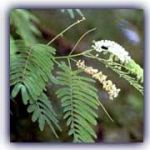| Drug Interactions: |
| Taking catechu with these drugs may increase the risk of hypotension (excessively low blood pressure): |
| Acebutolol, (Novo-Acebutolol, Sectral) |
Amlodipine, (Norvasc) |
Atenolol, (Apo-Atenol, Tenormin) |
Benazepril, (Lotensin) |
| Betaxolol, (Betoptic S, Kerlone) |
Bisoprolol, (Monocor, Zebeta) |
Bumetanide, (Bumex, Burinex) |
Candesartan, (Atacand) |
| Captopril, (Capoten, Novo-Captopril) |
Carteolol, (Cartrol, Ocupress) |
Carvedilol, (Coreg) |
Chlorothiazide, (Diuril) |
| Chlorthalidone, (Apo-Chlorthalidone, Thalitone) |
Clonidine, (Catapres, Duraclon) |
Diazoxide, (Hyperstat, Proglycem) |
Diltiazem, (Cardizem, Tiazac) |
| Doxazosin, (Alti-Doxazosin, Cardura) |
Enalapril, (Vasotec) |
Eplerenone, (Inspra) |
Eprosartan, (Teveten) |
| Esmolol, (Brevibloc) |
Felodipine, (Plendil, Renedil) |
Fenoldopam, (Corlopam) |
Fosinopril, (Monopril) |
| Furosemide, (Apo-Furosemide, Lasix) |
Guanabenz, (Wytensin) |
Guanadrel, (Hylorel) |
Guanfacine, (Tenex) |
| Hydralazine, (Apresoline, Novo-Hylazin) |
Hydrochlorothiazide, (Apo-Hydro, Microzide) |
Hydrochlorothiazide and Triamterene, (Dyazide, Maxzide) |
Indapamide, (Lozol, Nu-Indapamide) |
| Irbesartan, (Avapro) |
Isradipine, (DynaCirc) |
Labetalol, (Normodyne, Trandate) |
Lisinopril, (Prinivil, Zestril) |
| Losartan, (Cozaar) |
Mecamylamine, (Inversine) |
Mefruside, (Baycaron) |
Methyclothiazide, (Aquatensin, Enduron) |
| Methyldopa, (Apo-Methyldopa, Nu-Medopa) |
Metolazone, (Mykrox, Zaroxolyn) |
Metoprolol, (Betaloc, Lopressor) |
Minoxidil, (Loniten, Rogaine) |
| Moexipril, (Univasc) |
Nadolol, (Apo-Nadol, Corgard) |
Nicardipine, (Cardene) |
Nifedipine, (Adalat CC, Procardia) |
| Nisoldipine, (Sular) |
Nitroglycerin, (Minitran, Nitro-Dur) |
Nitroprusside, (Nipride, Nitropress) |
Olmesartan, (Benicar) |
| Oxprenolol, (Slow-Trasicor, Trasicor) |
Perindopril Erbumine, (Aceon, Coversyl) |
Phenoxybenzamine, (Dibenzyline) |
Phentolamine, (Regitine, Rogitine) |
| Pindolol, (Apo-Pindol, Novo-Pindol) |
Polythiazide, (Renese) |
Prazosin, (Minipress, Nu-Prazo) |
Propranolol, (Inderal, InnoPran XL) |
| Quinapril, (Accupril) |
Ramipril, (Altace) |
Reserpine, (Reserpine) |
Spironolactone, (Aldactone, Novo-Spiroton) |
| Telmisartan, (Micardis) |
Terazosin, (Alti-Terazosin, Hytrin) |
Timolol, (Betimol, Timoptic) |
Torsemide, (Demadex) |
| Trandolapril, (Mavik) |
Triamterene, (Dyrenium) |
Trichlormethiazide, (Metatensin, Naqua) |
Valsartan, (Diovan) |
| Verapamil, (Calan, Isoptin SR) |
| Taking catechu with these drugs may reduce the absorption of the drug: |
| Ferric Gluconate, (Ferrlecit) |
Ferrous Fumarate, (Femiron, Feostat) |
Ferrous Gluconate, (Fergon, Novo-Ferrogluc) |
| Ferrous Sulfate, (Feratab, Fer-Iron) |
Ferrous Sulfate and Ascorbic Acid, (Fero-Grad 500, Vitelle Irospan) |
Iron-Dextran Complex, (Dexferrum, INFeD) |
| Polysaccharide-Iron Complex, (Hytinic, Niferex) |
| Taing catechu with these drugs may increase the risk of constipation: |
| Atropine, (Isopto Atripine, Sal-Tropine) |
Benztropine, (Apo-Benztropine, Cogentin) |
Clidinium and Chlordiazepoxide, (Apo-Chlorax, Librax) |
Cyclopentolate, (Cyclogyl, Cylate) |
| Dicyclomine, (Bentyl, Lomine) |
Glycopyrrolate, (Robinul, Robinul Forte) |
Homatropine, (Isopto Homatropine) |
Hyoscyamine, (Hyosine, Levsin) |
| Hyoscyamine, Atropine, Scopolamine and Phenobarbital, (Donnatal, Donnatal Extentabs) |
Ipratropium, (Atrovent, Nu-Iprotropium) |
Oxitropium, (Oxivent, Tersigat) |
Prifinium, (Padrin, Riabel) |
| Procyclidine, (Kemadrin, Procyclid) |
Propantheline, (Propanthel) |
Scopolamine, (Scopace, Transderm Scop) |
Tiotropium, (Spiriva) |
| Tolterodine, (Detrol, Detrol LA) |
Trihexyphenidyl, (Artane) |
Trimethobenzamide, (Tigan) |
|

